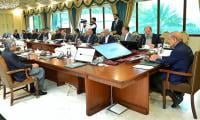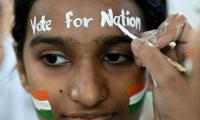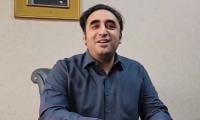Capital suggestion
Background: There are at least ten active separatist movements in India. The seven states with active separatist groups seeking separation from the Union of India are Jammu & Kashmir, Arunachal Pradesh, Assam, Manipur, Mizoram, Meghalaya and Nagaland. The Bharatiya Thalsena or the Indian Army has successfully crushed the secessionist movements in Punjab and Tripura.
Armed Forces Special Powers Act (AFSPA): In Punjab, between 1981 and 2016, fatalities resulting from the violence between the Indian Army and separation-seeking groups stand at 21,660 (killed). In India’s northeast, over the past 24 years, fatalities resulting from the violence between the Indian Army and separation-seeking groups stand at 21,412.
In Jammu & Kashmir, between 1989 and 2016, fatalities resulting from the violence between the Indian Army and separation-seeking groups stand at 94,466; civilians arrested 135,657, custodial killings 7,061, women gang-raped 10,283 and structures arsoned 106,071.
All India Radio: Jawaharlal Nehru, the first prime minister of India, said in a broadcast on November 2, 1947: “We have declared that the fate of Kashmir is ultimately to be decided by the people. We will not and cannot back out of it.”
Legal: UN Security Council’s Resolution 47 of April 21, 1948 states that “The final disposition of the State of Jammu and Kashmir will be made in accordance with the will of the Kashmiris expressed through the democratic method of a free and impartial plebiscite conducted under the auspices of the United Nations.”
Political rights: The political rights of the Kashmiris have been recognized by the early Indian leadership and the global community.
Conflict driver: The primary conflict driver in Kashmir is the persistent, relentless and an unbending desire of the Kashmiris to separate from the Union of India. When non-Kashmiri forces become part of the indigenous Kashmiri freedom struggle, the struggle gets polluted – and India uses that pollution to claim that the freedom struggle is foreign-sponsored ‘terrorism’.
Indian Troops: According to Arundhati Roy, there are 700,000 Indian troops in Kashmir. Defense News (HQ: Springfield, Virginia) has a figure of around 350,000 Indian soldiers and 200,000 paramilitary troops in Kashmir. BBC News has reported a figure of 300,000 to 500,000.
Plebiscite: India will lose it in Kashmir and then Arunachal Pradesh, Assam, Manipur, Mizoram, Meghalaya and Nagaland would all want separation from the Union of India. What about Punjab and Tripura?
Military solution: India has already deployed one soldier for every 12 Muslims in Jammu & Kashmir. India has already martyred 94,466 Kashmiris. India cannot wish away the Kashmiri ambition to secede from the Union of India. Kashmir has no military solution.
Diversion: The only choice that India is left with is to divert global attention from the Kashmiri freedom struggle. Yes, the manpower balance between the Indian Army and the Pakistan Army 2:1 in India’s favour. Yes, the Indian Air Force is four times bigger.
The fact remains that the land-based branch of the Indian Armed Forces is practically immobile – obsolete tanks, armoured vehicles and a lack of mobile artillery. The Indian Army has “less than seven days of reserves of key stocks of artillery ammunition, anti-tank missiles and a critical shortage of ammunition for its main battle tanks….(Center for the National Interest, Washington, DC).”
The fact remains that the Indian Air Force’s avionics is two generations old. The fact remains that at least one-third of the Indian Air Force is scrap (MiGs are ‘flying coffins’). India is short on air-defence assets, precision-guided munitions and lacks an integrated intelligence capability. India has no real special forces.
Reality versus perception: The reality in Kashmir is dead against India. India, however, seems to be winning the perception warfare, at least at the global stage.
The writer is a columnist based in Islamabad.
Email: farrukh15@hotmail.com Twitter: @saleemfarrukh
A woman walks past a building of the International Monetary Fund. — AFP/FileThe annual and spring meetings of the...
Late Benazir Bhutto's daughter Asifa Bhutto Zardari addresses the Christian community in Bihar Colony on January 23,...
Representational image. — PexelsWater is an important scarce natural resource that is required for several everyday...
Pakistani employees of online marketplace company Kaymu at work in Karachi. — AFP/FileThe true spirit of development...
India uses Afghanistan as a backstage area to carry out terrorist attacks against Pakistan
Another report by the Pakistan Institute of Peace Studies states that 78 per cent of attacks have been carried out by...







